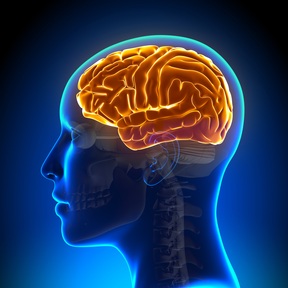Human brain created in laboratory to advance Alzheimer’s research
US researchers have developed an almost complete human brain laboratory dish to test new drugs and to study cognitive disorders, including Alzheimer’s disease.
Scientists at The Ohio State University have developed the brain organoid from adult human skin cells and contains 99 per cent of the genes present in a human foetal brain. The organoid could enable ethical, rapid and accurate testing of experimental drugs and advance studies of genetic and environmental causes of central nervous system illnesses.

Commenting on what is thought to be the most complete human brain model yet to be developed by scientists, lead researcher at Ohio State, Professor Rene Anand, said: “It not only looks like the developing brain, it’s diverse cell types express nearly all genes like a brain.
“We’ve struggled for a long time to try and solve complex brain disease problems that cause tremendous pain and suffering. The power of this brain model bodes very well for human health because it gives us better and more relevant options to test and develop therapeutics other than rodents.”
The three dimensional brain consists of a spinal cord, all major regions of the brain, multiple cell types, signalling circuitry and even a retina. Researchers have suggested that the complex brain model could dramatically accelerate the pace of neuroscience research.
Professor Anand commented: “In central nervous system diseases, this model will enable studies of either underlying genetic susceptibility or purely environmental influences, or a combination. Genomic science infers there are up to 600 genes that give rise to autism, but we are stuck there. Mathematical correlations and statistical methods are insufficient to identify causation. You need an experimental system - you need a human brain.”
Although full details of the brain growing process have been kept confidential, research has revealed that to develop the brain, scientists transformed adult skin cells into induced pluripotent stem (iPS) cells by altering their genes. The artificially created stem cells were then coaxed into creating the different cell types and the signalling circuitry of the brain.
Scientists spent 15 weeks developing the model system and observed expected maturation changes along the way. The organoid grew to the equivalent of 12 weeks in the womb, comparable to the maturity of a five-week-old foetal brain. Professor Anand, said: “If we let it go to 16 or 20 weeks, that might complete it, filling in that one per cent of missing genes.”
Researchers at the university have used the platform to launch projects, creating brain organoid models of Alzheimer’s and Parkinson’s diseases and autism. With further developments and the addition of a pumping blood supply, researchers have suggested that the model could potentially be used for future stroke therapy studies.
Latest News
 29-Jul-24
Dementia Bus gives carehome.co.uk staff insight into life with dementia
29-Jul-24
Dementia Bus gives carehome.co.uk staff insight into life with dementia
 01-Mar-24
Find out the top care homes in 2024
01-Mar-24
Find out the top care homes in 2024
 21-Mar-23
UK's top care homes in 2023 revealed
21-Mar-23
UK's top care homes in 2023 revealed
 03-Jan-23
carehome.co.uk launches free care helpline
03-Jan-23
carehome.co.uk launches free care helpline
 13-Dec-22
5 mins with Emily Whitehurst, chief operating officer for Constantia Healthcare
13-Dec-22
5 mins with Emily Whitehurst, chief operating officer for Constantia Healthcare